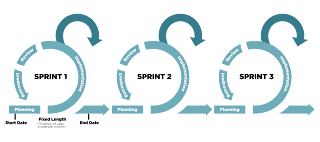Understanding Docker: A Comprehensive Guide
Introduction
In recent years, containerization has become a pivotal technology in the world of software development and deployment. Among the various containerization tools available, Docker stands out as a powerful and widely adopted solution. In this blog post, we will delve into the fundamentals of Docker, exploring its key concepts, benefits, and practical applications.
What is Docker?
Docker is an open-source platform designed to automate the deployment, scaling, and management of applications within lightweight, portable containers. Containers encapsulate an application and its dependencies, ensuring consistency across different environments. Docker provides a standardized runtime environment, enabling seamless execution of applications across diverse systems.
Key Concepts
Containers
Containers are lightweight, standalone, and executable software packages that include everything needed to run a piece of software, including the code, runtime, libraries, and system tools. Docker containers ensure consistent performance across various environments, facilitating efficient development and deployment workflows.
Images
Docker images serve as the blueprints for containers. An image is a lightweight, standalone, and executable package that includes the application code, runtime, libraries, and other dependencies. Images are stored in a registry, allowing for easy sharing and distribution.
Registries
Docker registries store and manage Docker images. Popular public registries include Docker Hub, where developers can share and access pre-built images. Organizations often use private registries to manage their internal images securely.
Benefits of Docker
Portability
Docker containers encapsulate applications and their dependencies, making them highly portable. Developers can build an application in a container and run it consistently across different environments, from a local development machine to a production server.
Isolation
Containers provide a level of isolation between applications, preventing conflicts between dependencies and ensuring that changes to one application do not affect others. This isolation enhances security and stability in multi-application environments.
Scalability
Docker facilitates easy scaling of applications by allowing them to run in containers that can be quickly deployed and replicated. This scalability is crucial for handling varying workloads and optimizing resource utilization.
Practical Applications
Development Environments
Docker simplifies the setup of development environments by encapsulating the entire development stack within containers. This ensures that developers work in consistent environments, reducing "it works on my machine" issues.
Continuous Integration/Continuous Deployment (CI/CD)
Docker plays a pivotal role in CI/CD pipelines by providing a consistent runtime environment for testing and deploying applications. Containers can be seamlessly integrated into CI/CD workflows, enabling faster and more reliable software delivery.
Microservices Architecture
Docker is well-suited for building and deploying microservices architectures. Each microservice can run in its own container, enabling independent development, scaling, and deployment of individual services.
Conclusion
Docker has revolutionized the way software is developed, tested, and deployed. Its containerization technology brings consistency, portability, and scalability to modern software development practices. Whether you are a developer, system administrator, or DevOps engineer, understanding Docker is essential for navigating the evolving landscape of containerized applications.


Comments
Post a Comment